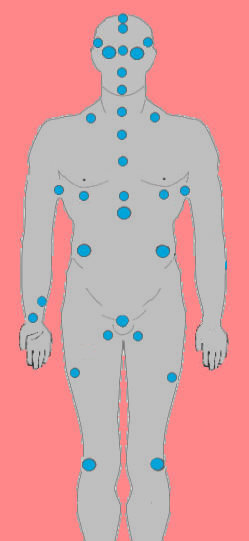Fifth Kyū – Green Belt with One Black Stripe
Yourself
Mind
Strategy
Tactics
Know yourself first and then others.
Funakoshi’s Twenty precepts
#4
The following is attributed to Shushiwa
Therefore I say, know the enemy and know yourself; in a hundred battles you will never be in peril.
Attributed to Shushiwa
When you are ignorant of the enemy but know yourself, your chances of winning or losing are equal.
If ignorant both of your enemy and of yourself, you are certain in every battle to be in peril.
For to win one hundred victories in one hundred battles is not the highest skill.
To subdue the enemy without fighting is the highest skill.
Karate is like boiling water, if you do not heat it constantly it will soon start to cool.
Funakoshi Gichin
In Sōke Kaichō Kinjō’s experience, the immensely talented student often does not last long in the martial arts. With the ability to easily handle whatever is thrown at him or her, such a student can become complacent with their innate skill level and not make the effort to improve. The complacent individual may happily remain unaware of his or her shortcomings. Do you recognize yourself in this list?
- Not fully engaged in class
- Don’t feel challenged
- Lack of initiative
- Expectation of promotions without effort
- Too much self-confidence
- Acting without thinking
- Sloppy technique
- Taking shortcuts
- Making frequent mistakes
The complacency of the young and talented is nothing new and certainly not limited to karate training. The following quote was written in the 1400s by the founder of Japanese Noh theater, the oldest surviving form of Japanese theater. Noh combines music, dance and acting. No martial arts.
“When you are young, there are flowers that are unique to youth. However, if you think of it as your ability and neglect to practice and train, you will never be able to grasp the true flower.”
Quote from “Fuze Kaden” written in the early 1400’s by Zeami, founder of the Noh Theater
There will always be a few students who are gifted with special ability. Teaching a very talented student may seem like an instructor’s dream However, without special attention, the very talented may become self-satisfied and not work to develop his or her ability to its full potential. Like the hare in “The Tortoise and the Hare,” they can be found napping alongside of the road to martial arts success.
An average person who has a very strong desire to achieve his or her martial arts goals is self-motivated. With great determination, such a person, though clumsy at first, will grow – maybe slowly but definitely surely.
The Tortoise and the Hare
There once was a speedy hare who bragged about how fast he could run. Tired of hearing him boast, Slow and Steady, the tortoise, challenged him to a race. All the animals in the forest gathered to watch. Hare ran down the road for a while and then and paused to rest. He looked back at Slow and Steady and cried out, “How do you expect to win this race when you are walking along at your slow, slow pace?” Hare stretched himself out alongside the road and fell asleep, thinking, “There is plenty of time to relax.” Slow and Steady walked and walked. He never, ever stopped until he came to the finish line. The animals who were watching cheered so loudly for Tortoise, they woke up Hare. Hare stretched and yawned and began to run again, but it was too late. Tortoise was over the line. After that, Hare always reminded himself, “Don’t brag about your lightning pace, for Slow and Steady won the race!”
An Aesop Fable
The vital points, kyūsho. are those vulnerable areas of the human body that, if attacked with enough force and accuracy, can cause serious damage. The vital points are vital because they are areas where shock to the underlying nerves can cause serious damage, unconsciousness or death. We should visualize attacking the vital points of our imaginary opponent when we practice kata.
Why Study the Vital Points?
It is important to study the vital points so that you know where to strike in a serious fight, but also where not to strike to avoid accidentally causing injury to your training partner. We all know the story. Kanbun Uechi was forced to leave China in disgrace after one of his students accidentally killed a man during a dispute using Pangainoon techniques that he had learned from Kanbun Uechi. If Kanbun Uechi’s student had had a better understanding of the kyūsho then Kanbun Uechi might never have been forced to leave China and all of our history from Pangainoon to Uechi Ryū to Kōburyū might never have happened!
Practice the Vital Points
Sōke Kaichō Kinjō has created a type of makiwara for practicing actually striking the vital points. It is a panel with a full-sized outline of a human body with the kyūsho marked as dots on the body – like you see below. Students can practice striking the kyūsho with power, precision and accuracy. The vital points that Sōke Kaichō Kinjō considers most important in a frontal attack are marked by the blue dots.

Doctrine a principle or position or the body of principles in a branch of knowledge or system of belief : dogma.
a principle or set of principles laid down by an authority as incontrovertibly true – core assumptions
Strategy
a plan of action or policy designed to achieve a major or overall aim.
Tactics
an action or strategy carefully planned to achieve a specific end.
